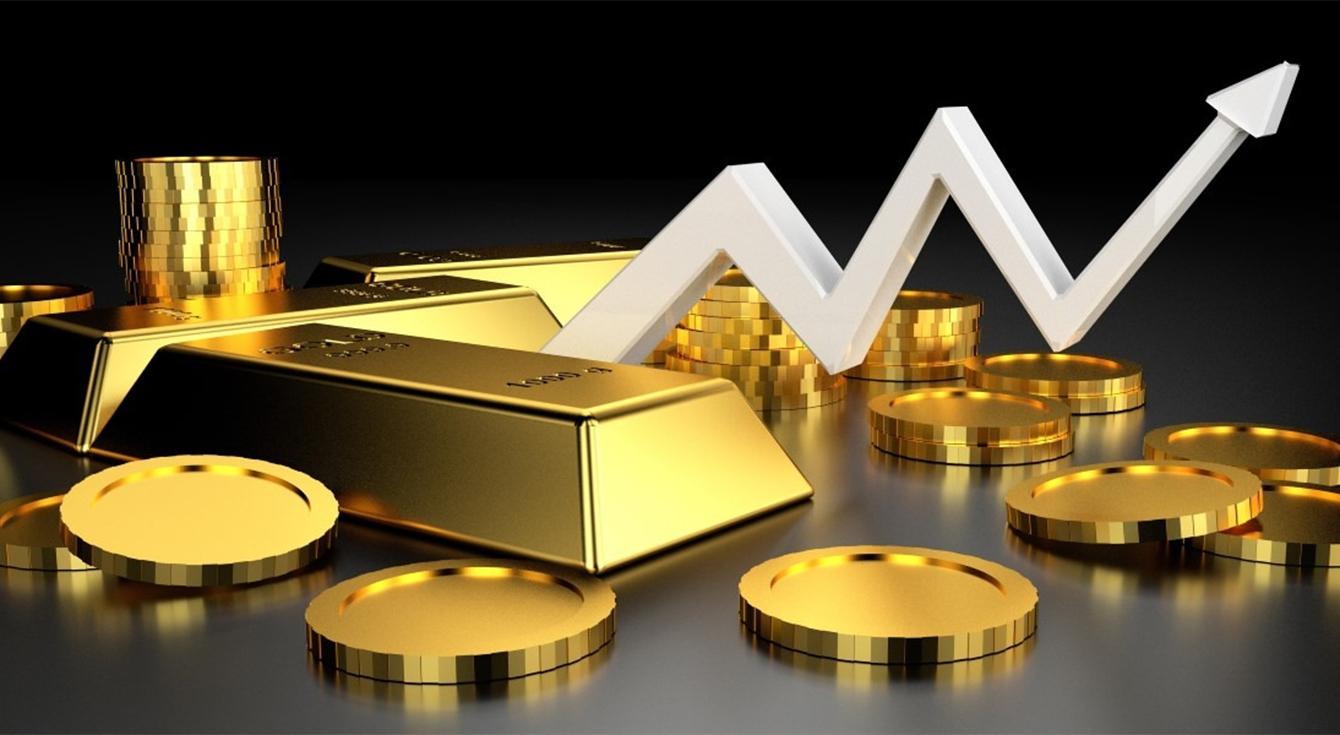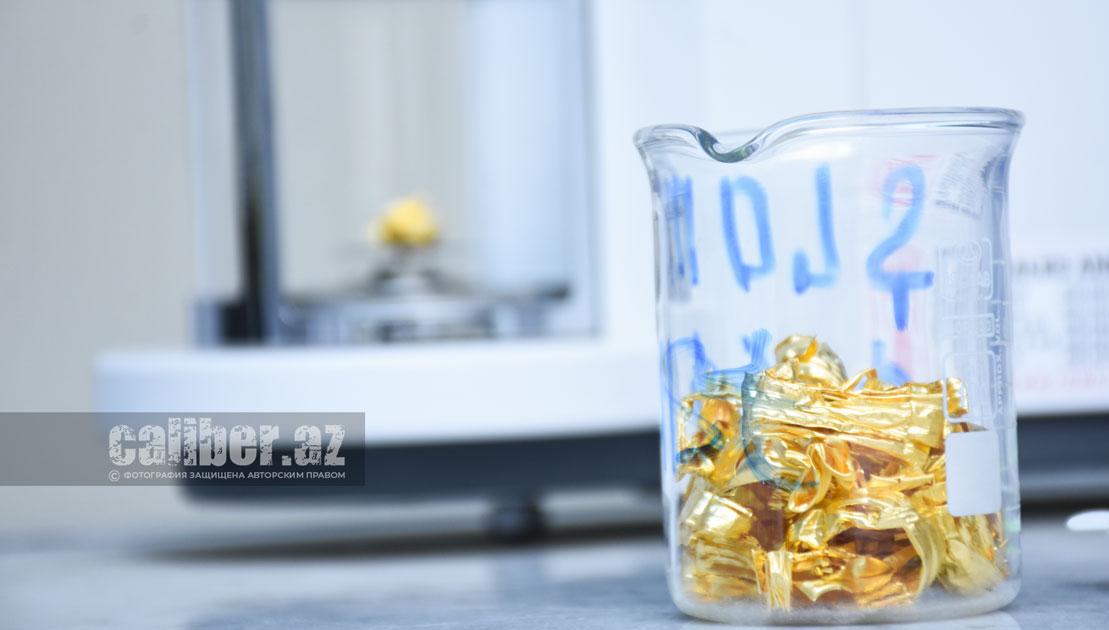Soaring precious metals prices encourage Azerbaijan to boost extraction Higher revenues foreseen
In the last decade of May, gold prices hit an all-time high again, reaching $2,454 per troy ounce. Against the backdrop of geopolitical instability, concerns about "bubbles" in the banking and stock markets and the predictable policy of the US Federal Reserve System (FRS) on the discount rate, investors have become increasingly active in using gold to hedge risks.
Since the beginning of this year, there has been a sharp rise in gold prices amidst comparative stability that had been maintained for several years after the COVID-19 pandemic. According to world experts, global demand for precious metals will increase further, and such prospects promise Azerbaijan, which is expanding exploration and development of new deposits, a steady growth in revenues from exports of precious metals.
Assessing the situation in the precious metals market over the last three years, it should be noted that in the post-pandemic period - in 2021 - gold did not significantly increase in value, as amidst economic recovery, investors found more profitable instruments as protection against price growth - investments in real estate, stocks, raw materials, cryptocurrency. Despite the price spikes in March-April 2022 due to high market volatility on the back of the Russian-Ukrainian war, the weighted average price for the yellow metal remained at $1,800 per troy ounce at the end of the year, i.e. remained approximately within the same limits as a year earlier.
In 2023, gold prices averaged $1,940 per ounce, up nearly 8 per cent year-over-year, with most of the rise occurring in the last quarter as the Palestinian-Israeli conflict flared up again and the confrontation with the Houthis in the Red Sea region intensified. Historically, any major military conflict anywhere in the world makes a significant part of investors hedge risks by transferring part of their funds into protective assets, mainly gold.
The impact of global geopolitical negativity on the precious metals market has only intensified in 2024, at the same time as fundamental economic factors have begun to influence demand indicators. In particular, in January-April of this year, gold prices rose by more than 12 per cent, even despite delays in interest rate cuts by the Federal Reserve due to persistent inflationary concerns.
Investor behaviour depends on the difference between the interest rate and the numerical value of money depreciation. If profits can be made on investments in securities and other financial assets and the risk of capital loss is minimised, investors will not spend money on precious metals that do not generate a tangible permanent income and require storage costs.
On the other hand, when interest rates on alternative assets cannot cover the inflation rate, then the risk of buying them is inappropriate and investors turn to gold. Traditionally, prices for the precious metal rose sharply when interest profits fell to zero: savers start investing in gold when interest rates artificially fall, as even a minimal level of inflation reduces them to negative values, making any investment in highly liquid assets meaningless. In this respect, today the market is reacting not even to specific decisions, but to the Fed's promises to start a cycle of discount rate cuts from September 2024.
It is not insignificant that this year the world central banks demonstrated an unprecedented surge in demand for gold in the history of observation of the last decades. According to an April report by the World Gold Council, regulators added 290 tonnes of gold to their official reserves in the first quarter of this year alone, primarily due to China, which increased its reserves by 27 tonnes and continued buying gold in April. The first quarter of this year saw historic highs exceeding even the significant levels seen in 2022 and 2023 and along with the Middle Kingdom, Türkiye and India are leading the trend. Notably, this trend is accompanied by a massive repatriation of gold reserves, driven by fears of possible sanctions and economic instability. A study by Invesco found that an increasing number of central banks and sovereign wealth funds are choosing to return their gold reserves to their home countries, away from traditional storage locations such as London and the US. This movement, which began in December 2019, has become massive in the recent period, and is characterised by additional pressure on market demand, with declining supply.

Actually, that is why, gradually increasing since the beginning of the year, gold prices on COMEX by 21 March rose to a record at that time mark of $2225.3 per troy ounce, the next tangible level - $2,315 - was reached in the first days of April, and already on 19 April the boundary of $2,400 was overcome. And on 20 May the gold price updated the historical record at the level of $2,454 per troy ounce.
And this is far from the limit. According to the forecast of the world's leading investment banking structure Goldman Sachs, gold is on an unshakeable "bullish trend" and by the end of this year prices will reach $2700 per ounce. In turn, analysts at Citi Research do not rule out that gold prices could soar to $3,000 per ounce over the next 12-18 months in the presence of certain catalysts, such as de-dollarisation of central banks in developing countries or another global recession, which could prompt the Fed to rapidly lower rates.
On the one hand, the trends observed in the world force Azerbaijan to diversify its gold and foreign exchange reserves, in particular, taking into account the high risks for the investment portfolio due to negative processes in the global economy and financial markets, the State Oil Fund (SOFAZ) increased the share of gold from 13.1 per cent to 13.9 per cent of total assets in the previous year. As a result, about 101.8 tonnes of gold were reserved in SOFAZ by the beginning of 2023. The trend of increasing the share of gold in the fund's assets continued in the first quarter of 2024.
At the same time, the prospects for further growth in gold prices promise Azerbaijan, which is expanding exploration and development of new deposits, a steady increase in export revenues. The companies operating in the mining segment of the Azerbaijani economy - Anglo Asian Mining Plc. (AAM) and the state-owned AzerGold CJSC, which plan to expand exploration, increase the extraction of gold-bearing ore at new deposits and its processing with the use of cutting-edge technologies.

For several reasons, the past year was not quite successful for domestic gold mining companies, with gold production of about 2,614 tonnes, which is 17.7 per cent less than in 2022. Nevertheless, this year sees trends that promise a rapid overcoming of the industry decline. Thus, in the first quarter of 2024, AzerGold CJSC produced 11,500 ounces of gold, exceeding the current plan for the production of this precious metal by 2 per cent, and when compared with the gold production in January-March 2023, the company achieved 58 per cent growth.
It should be reminded that by the end of the current year, CJSC plans to produce and sell 70,000 ounces of gold: i.e. to increase production by 10 per cent and sales by 3 per cent compared to last year's figures. It should be noted here that AzerGold continues active and multidisciplinary geological research for exploration of gold deposits, including in Nakhchivan Autonomous Republic, as well as in Dashkasan, Goygol, Balaken and Kalbajar regions. Additionally, in the coming years, it is planned to start prospecting and appraisal works using aero electromagnetic surveys in the Shusha, Khojali and Aghdara districts of the Karabakh region, which promises a steady increase in the development of precious metal deposits in the future.
For its part, Anglo-Asian Mining Plc., which is developing a number of gold, silver and copper deposits in the country, plans to mine the first ore at the Gilar deposit, where gold, copper and zinc reserves have been explored, by the end of 2024. In anticipation of processing richer ores from the Gilar deposit, the company has doubled the capacity of the flotation plant at the Gadabay mine to 160 tonnes per hour. At the same time, AAM has begun negotiations with the Azerbaijani government to gain access to its contract areas in the Karabakh economic region. In particular, the development of the Demirli copper-molybdenum mine and the Gizilbulag gold deposit may begin in Karabakh in the near future.








